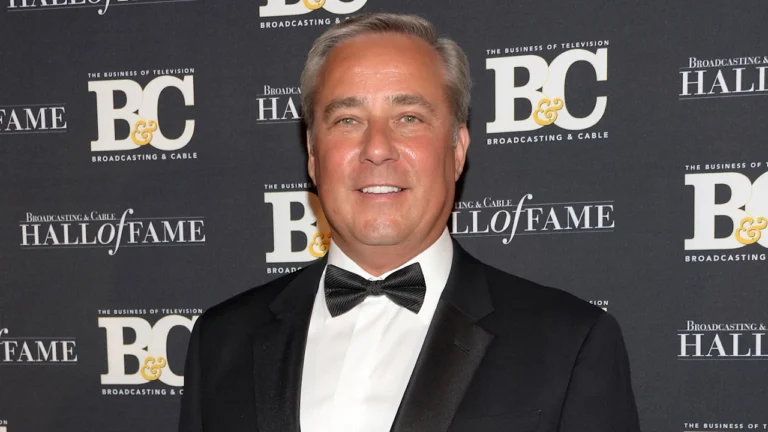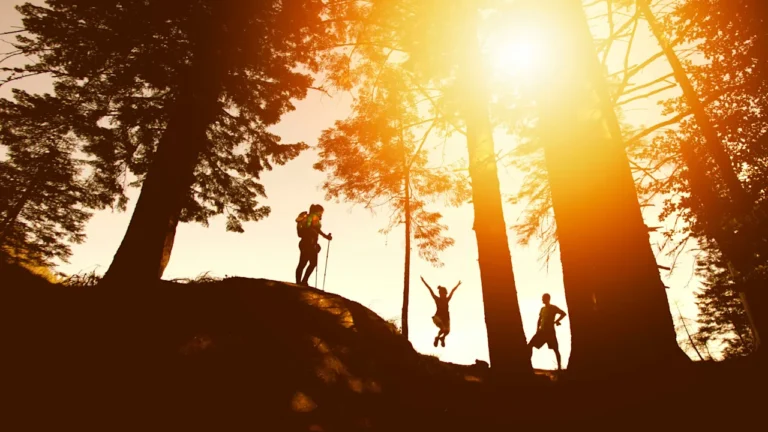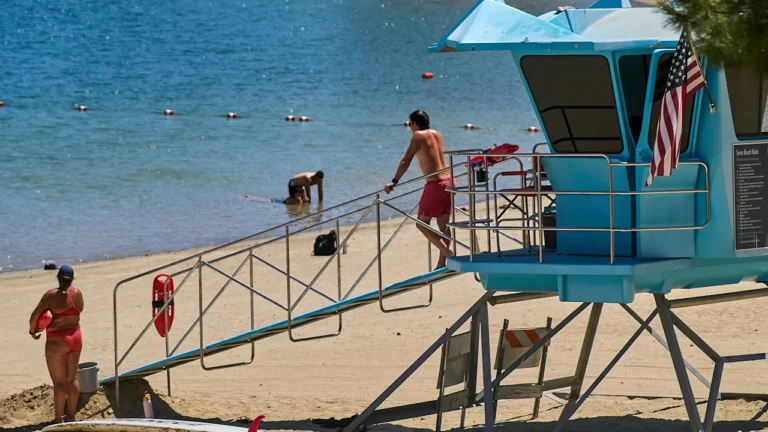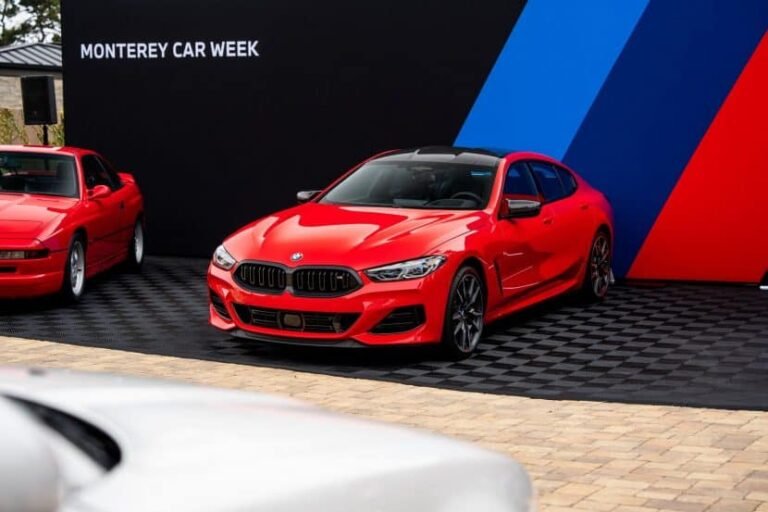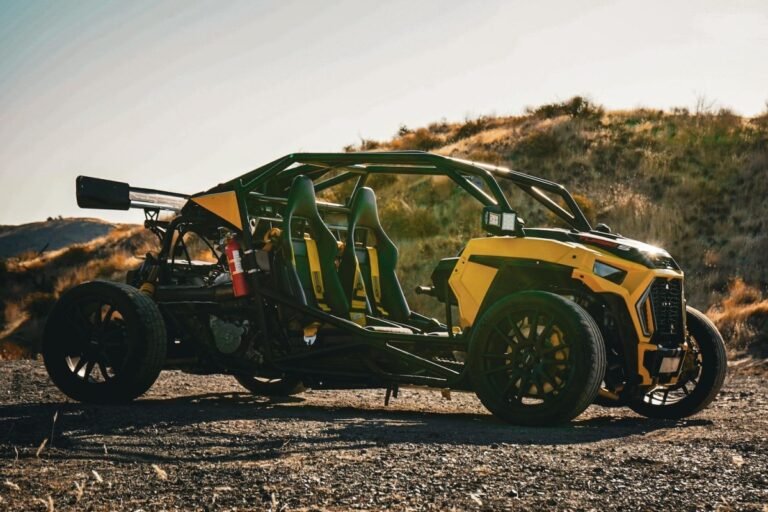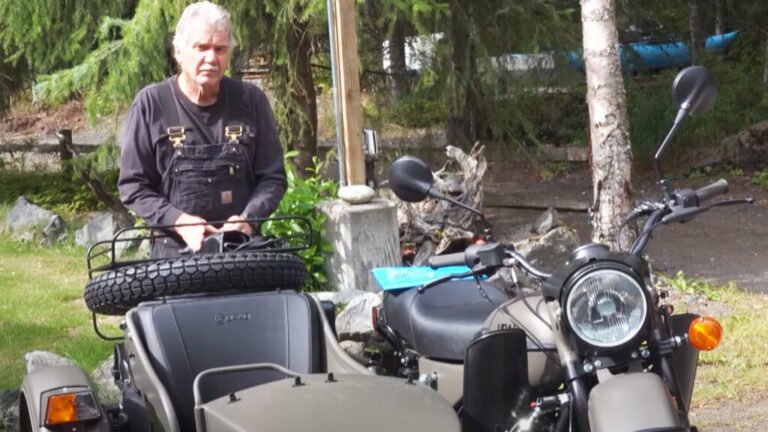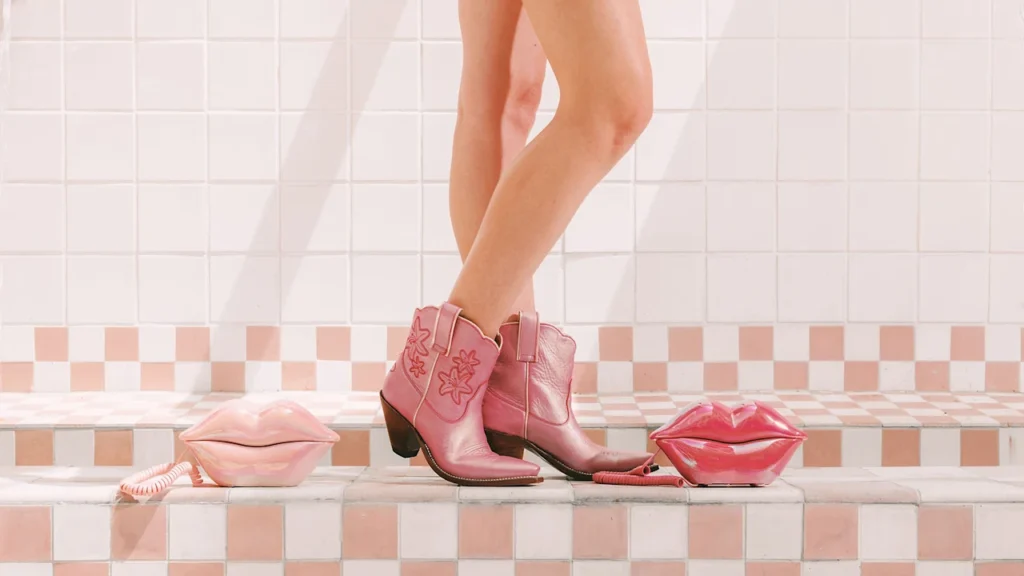
Everywhere you turn these days, you’ll find someone wearing a fabulous pair of cowboy boots.
Throughout the summer, Beyoncé and her legions of fans wore bedazzled pairs for her Cowboy Carter tour. Some of the hottest TV shows right now, from Yellowstone to The Hunting Wives, feature fabulous Western style. Then there’s fashion: Brands ranging from Louis Vuitton to Gap to Mother Denim have recently released cowboy-inspired collections. The market for cowboy boots alone is expected to hit $289.7 million in 2025 and reach $538.6 million by 2035.
Lizzie Means Duplantis and Sarah Means, the sisters who founded cult cowboy boot brand Miron Crosby, are keen observers of this footwear style. They point out that even as cowboy boots periodically break into mainstream American culture, in many parts of the country people wear cowboy boots everyday, with all kinds of outfits. “We grew up on a cattle ranch in West Texas that has been in our family since 1884,” says Means. “We had rugged everyday boots, but also fancy boots we would wear on special occasions. We would wear them with jeans and with ball gowns.”
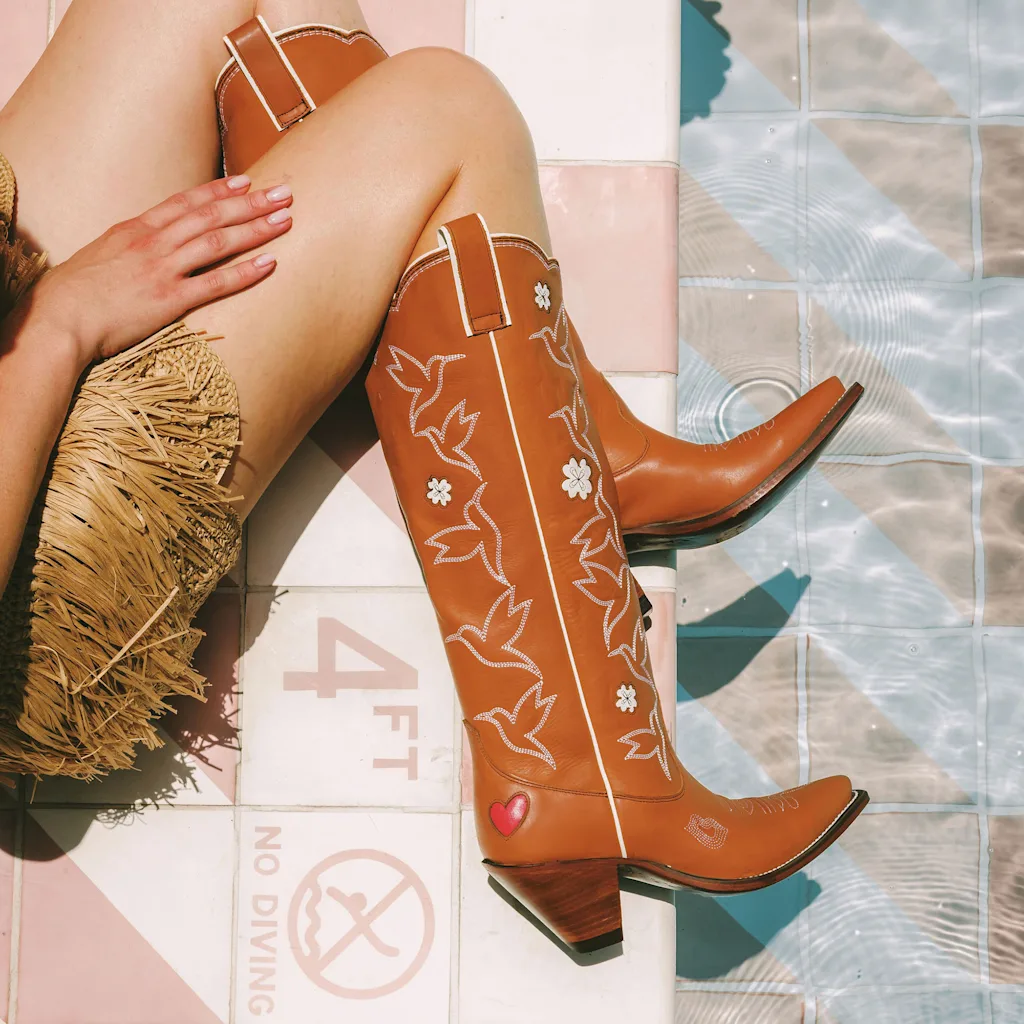
The sisters are on a mission to turn the cowboy boot into a closet staple across America. They launched their direct-to-consumer brand in 2017, selling luxurious, fashion-forward Miron Crosby boots worn by everyone from Grammy-winning singer-songwriter Kacey Musgraves to supermodel Gigi Hadid. The label is known for boots with unique embellishments (like hearts and stars that look hand-drawn) crafted from exceptionally supple leathers in artisanal factories. With its designs priced from $1,096 to $3,295, Miron Crosby is a more upscale version of Tecovas, a direct-to-consumer brand focused on making affordable, everyday cowboy boots.
But Duplantis and Means now want to bring their fashion-forward aesthetic to a broader audience. So today they’re launching Besita, a new label with more accessibly priced boots (ranging from $395 to $795) selling at Anthropologie, LoveShackFancy, Boot Barn, and other retail stores. “People have been awakened to the romance of the West,” says Means. “But we believe this isn’t just a trend. I think people are beginning to realize that cowboy boots are a versatile shoe that is central to the American aesthetic.”
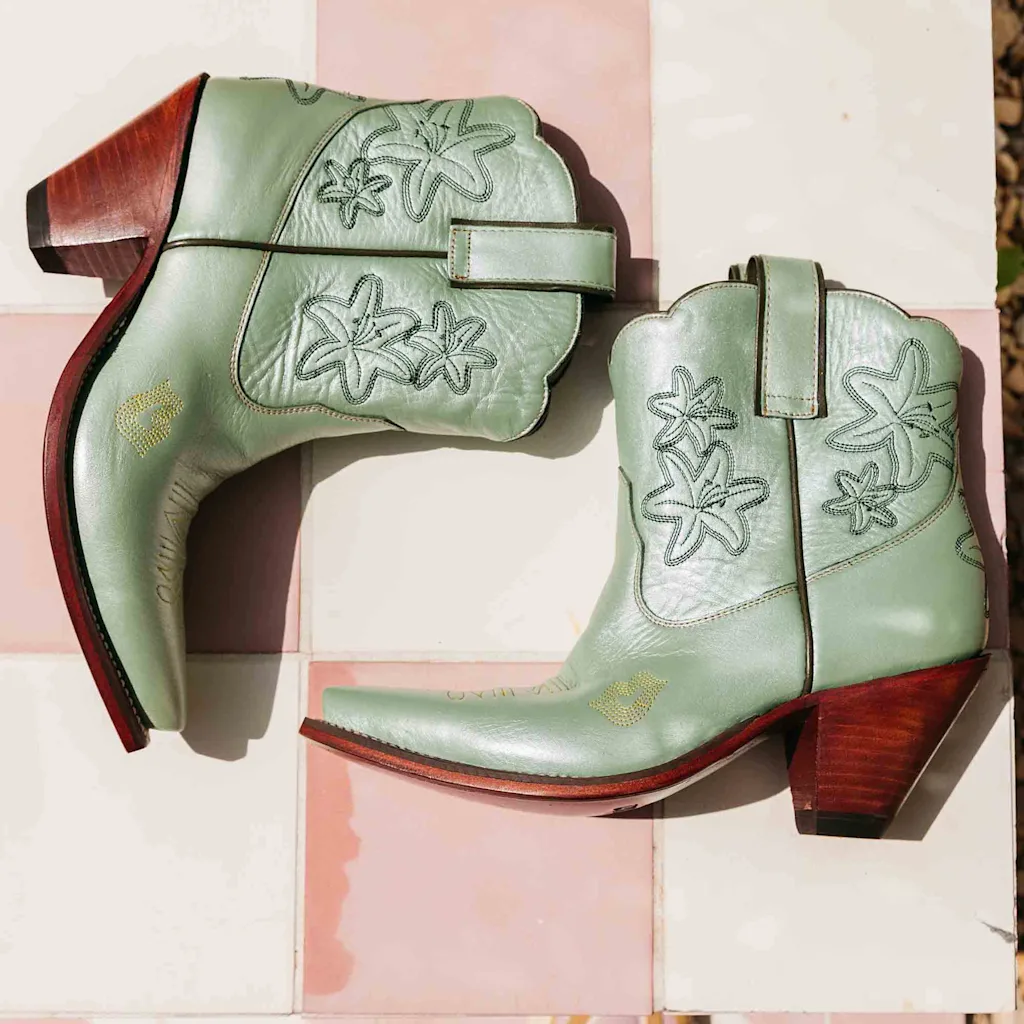
The Craft of the Cowboy Boot
Growing up in Texas, Duplantis and Means saw cowboy boots as heirlooms. On their ranch, beautiful pairs crafted with intricate designs were passed down from their grandparents and great-grandparents. “There’s a lot of craftsmanship that goes into creating these boots,” Duplantis says. “Where other people would ask for jewelry to mark special occasions, we would ask for boots.”
When they launched Miron Crosby, their goal was to create fashionable cowboy boots with a high level of craftsmanship. This was an unusual move. Whenever cowboy boots come into fashion, brands seem to capitalize by making Western-looking styles in the same mass-market factories where their other shoes are made. In contrast, Duplantis and Means sought out factories that had been making boots for generations, including one in Mercedes, Texas, and several in Leon, Mexico, known as the capital of cowboy boot-making.
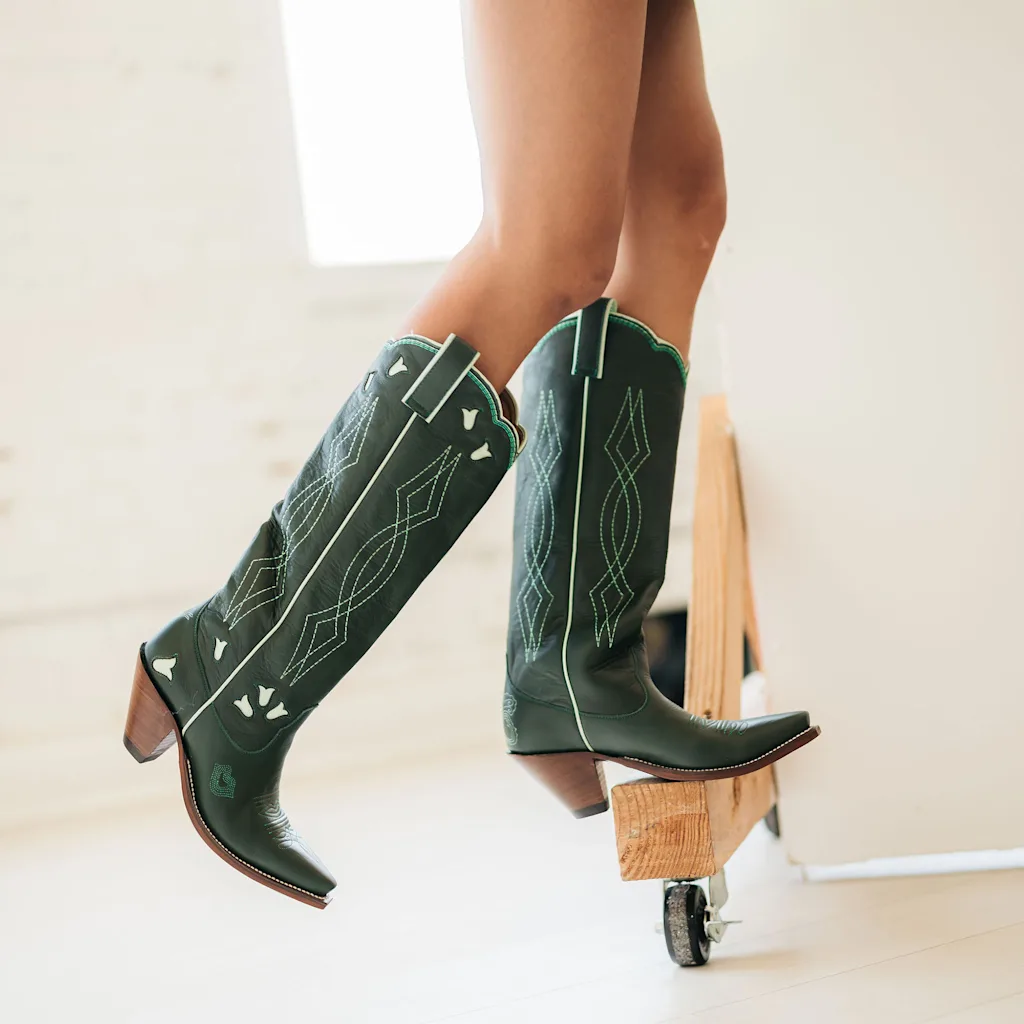
The sisters launched Miron Crosby with Caroline Cree, an Irish designer who has worked at American legacy brands like Coach, Lands’ End, and Gap. Cree has brought a keen interest in fine arts to her work. Every season, her new designs start with hand-drawn sketches, often inspired by nature. In her recent collections for Miron Crosby, there are boots covered in stars, flowers, and feathers. There’s a tall boot full of complex drawings of constellations and zodiac signs. And since the sisters’ family farm is called Moon Ranch, moons are a common motif.
Cree digitizes the hand drawings, then the artisans in the factory begin incorporating them into the boots, using all kinds of complex, labor-intensive techniques. For instance, they create inlays of designs, which involves cutting out shapes on the leather, revealing a different color underneath. They also do appliqué, which involves cutting out shapes and stitching them onto the boots. “Each boot takes hours of labor and generational knowledge,” Cree says.

Making A More Affordable Pair
For Besita, the team wanted to create boots that were just as beautiful and expertly made, but at a more affordable price. To do this, Cree created designs that were slightly less labor intensive to make. While the Miron Crosby boots are covered in inlays, Besita boots have just a few. And while artisans often cut out the Miron Crosby designs by hand, Cree created Besita designs that can be more easily laser cut by machine.
Another difference is the leather itself. Miron Crosby uses some of the most expensive leathers on the market, like exotic pythons, and kid skins typically used in expensive gloves. It also uses fashion-forward leathers such as gold and iridescent foils. The Besita boots use high-quality but more commonly available cow hides. But the Besita boots are made in the same Leon factories that make Miron Crosby boots. “Besita means ‘little kiss’ in Spanish,” says Cree. “It’s a way of paying homage to the Mexican factories.”
Ultimately, Duplantis and Means hope that Besita introduces the cowboy boot to an even wider audience. They’ve partnered with a range of retailers that are styling the boots in many ways. The boots will be sold in the Texas-based department store St. Bernard, where consumers will likely be familiar with the cowboy boot aesthetic. But they will also be available at LoveShackFancy, which has a distinctively feminine, Victorian-inspired vibe, and Anthropologie, where they will be styled with the retailer’s characteristically boho-chic flair. “It will be fun to create a whole look around your cowboy boots at these stores,” says Duplantis.
